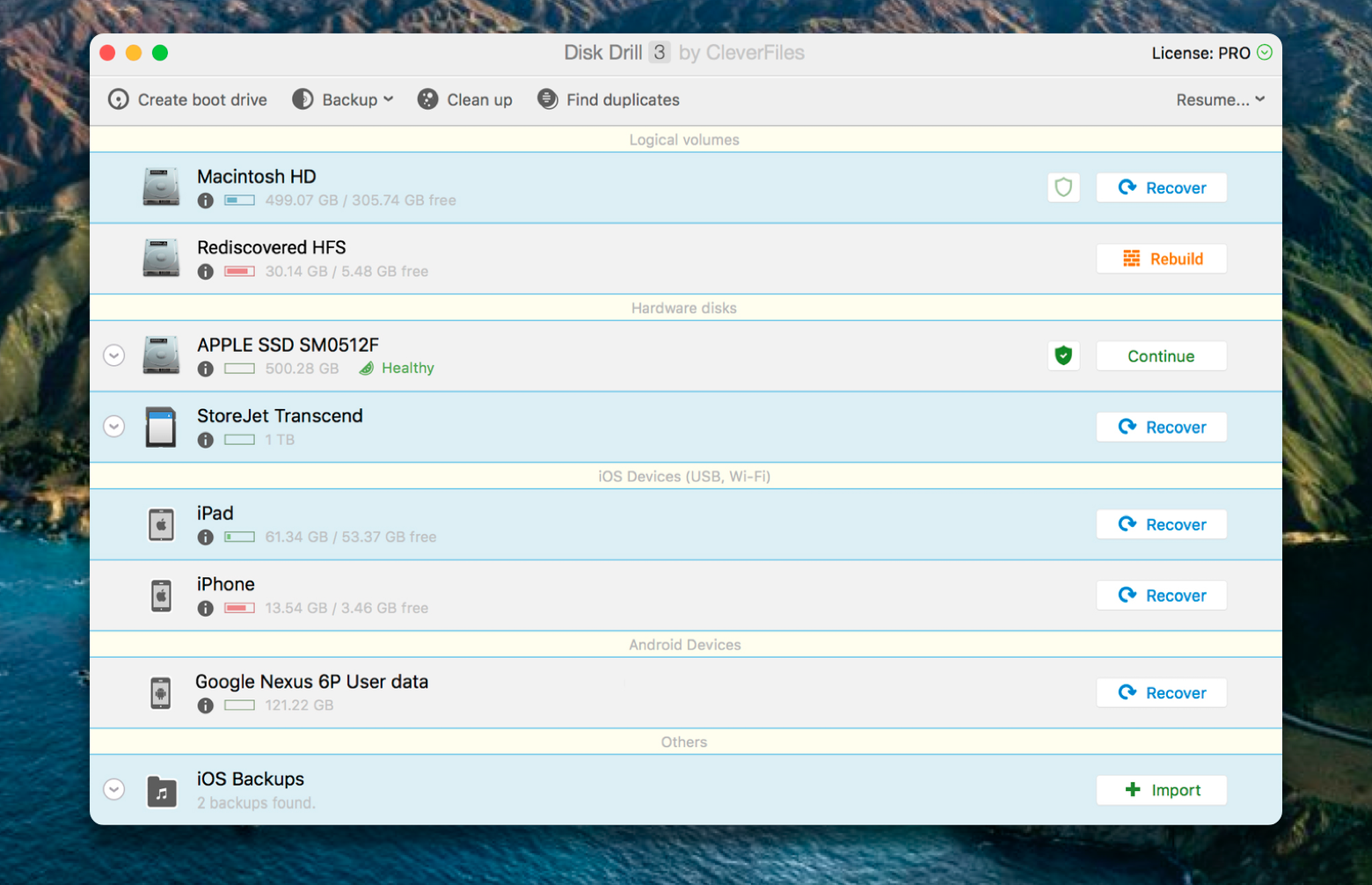

Troubleshooting errors you might run into If you'd like to go further and dig into more data, this superuser post is rather handy, and similarly, this post covers use of the usbmuxd tool. That'll mount your iPhone as a disk on your machine. You'll see the UDID shown in the "Hardware identifiers" section:ĭevice data shown in iPhone Backup Extractor Run iPhone Backup Extractor while your device is connected, select your device, and choose the "Info" tab.
#DISK DRILL IPHONE FREE#
You can do this with the free version of iPhone Backup Extractor, with the lsusb command, or with ioreg -p IOUSB -l -w 0.

#DISK DRILL IPHONE INSTALL#
In order for this to work, you'll need to install the free Homebrew Package Manager and be familiar with using Terminal on macOS.įirst of all, let's find your device's UDID.
#DISK DRILL IPHONE HOW TO#
Let's demonstrate that approach on macOS, and how to mount a device. On Windows, the popular Dokan user-mode file system is often used, and on macOS osxfuse is popular.įrom a user's perspective, because FUSE normalises the way the device's data is presented, it usually doesn't matter which underlying protocol is responsible for the mount. In the case of mounting an iPhone as a drive, FUSE would communicate with the iPhone using another protocol: SSH, AFC/AFC2, PTP or WebDAV. FUSE itself is an abstraction layer, in that it isn't the technology that communicates directly with the device or data source: usually, another approach is used for that. FUSE stands for " filesystem in userspace" and is available in different forms on most platforms. Accessing app data over USB with FUSEįUSE is a system that lets users mount drives on their Windows or Mac computers without needing to make administrator-level changes to their systems. Accessing photos & app data over AFC with iTunesĪpple's knowledge-base has an article describing how to manage rudimentary filesharing with iTunes. And PTP doesn't support functionality such as renaming or modifying files or folders: instead, it must delete and recreate them to effect a change. PTP has a number of drawbacks: most obviously, you can't access files other than from the camera. You'll probably recognise the DCIM folders that photos tend to appear in. This uses Picture Transfer Protocol (PTP) which is a fairly limited system allowing you to copy photos back and forth. IOS automatically presents modern devices as cameras when they're connected over USB. PTP: Accessing Photos, videos and camera data as a disk mount In this article, we look at both approaches. On a non-jailbroken device, it's only possible to work with data in camera files and selected apps.


 0 kommentar(er)
0 kommentar(er)
